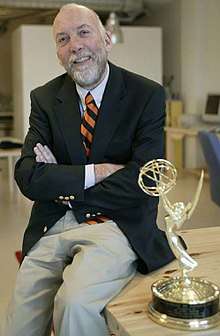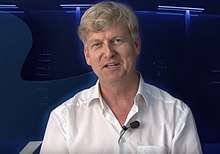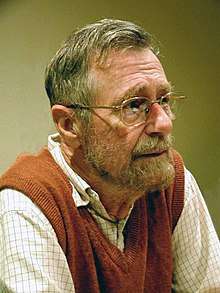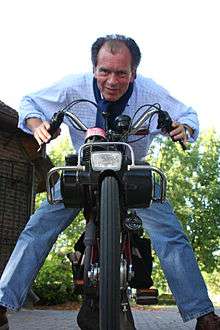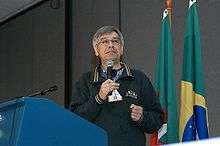Eindhoven University of Technology
|
Technische Universiteit Eindhoven | |
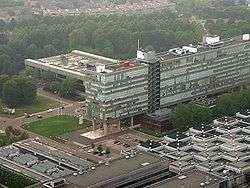 | |
Former names | Technische Hogeschool Eindhoven |
|---|---|
| Motto | Mens Agitat Molem |
Motto in English | Mind moves matter [1] |
| Type | Public, Technical |
| Established | 23 June 1956[2] |
| Budget |
€287.4M (2011)[3] €319.9M (2014)[4] |
| Rector | Prof.dr.ir. F.P.T. Baaijens |
Administrative staff | 2,200 |
| Students | 12,472[5] |
| Location |
Eindhoven, North Brabant, Netherlands 51°26′53″N 5°29′23″E / 51.44806°N 5.48972°ECoordinates: 51°26′53″N 5°29′23″E / 51.44806°N 5.48972°E |
| Campus | Urban, 121 ha (300 acres) |
| Colors |
Red and dark blue[6] |
| Affiliations | 4TU, CESAER, Santander, CLUSTER, EUA and Eurotech |
| Website | http://www.tue.nl/en |
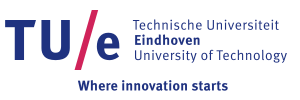 | |
The Eindhoven University of Technology (Dutch: Technische Universiteit Eindhoven, abbr. TU/e) is a university of technology in Eindhoven, Netherlands. Its motto is Mens agitat molem (Mind moves matter). The university was the second of its kind in the Netherlands, only Delft University of Technology existed previously. Until mid-1980 it was known as the Technische Hogeschool Eindhoven (abbr. THE).
In 2011 QS World University Rankings[7] placed Eindhoven at 146th internationally, but 61st globally for Engineering & IT. Furthermore, in 2011 Academic Ranking of World Universities (ARWU) rankings,[8] TU/e was placed at the 52-75 bucket internationally in Engineering/Technology and Computer Science (ENG) category and at 34th place internationally in the field of Computer Science.
History
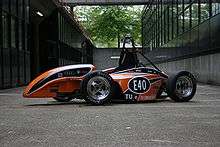
The Eindhoven University of Technology was founded as the Technische Hogeschool Eindhoven (THE) on 23 June 1956 by the Dutch government. The University was acknowledged for its research in Automobile sector. It was the second institute of its kind in the Netherlands, preceded only by the Delft University of Technology. It is located on its own campus in the center of Eindhoven, just north of the railway station. It is currently home to about 240 professors, 7200 students, 250 PDEng-students, 600 Ph.D. students, 200 post-doc students and 3000 regular employees. It supports about 100 student associations and 15 alumni associations.[9] Yearly, the Eindhoven University of Technology produces almost 3000 scientific publications, 140 PhD-awards, and 40 patents.
The Eindhoven University of Technology is main participant in the technological top institutes DPI and M2i. One of its former students is Gerard Kleisterlee, a former CEO of Philips.
The university is in an area where several companies active in technology are doing their research, like Philips, ASML and DAF. The university maintains close contacts with most of these companies.
As of 29 April 2005, Prof.dr.ir. C.J. van Duijn has the position of rector magnificus.
In 2006, the university celebrated its 50th birthday.
In a 2003 European Commission report,[10] TU/e was ranked as 3rd among European research universities (after Cambridge and Oxford, at equality with TU Munich and thus making it the highest ranked Technical University in Europe), based on the impact of its scientific research. In 'The Times Higher Education Supplement World University Ranking 2005'.[11] it was ranked 74th among world universities, and 67th in 2006.
The university operates several international cooperations with other universities all over the world; the Brain Bridge with Zhejiang University, People's Republic of China, is an example of such a cooperation. Also, the university maintains partnerships with several Dutch universities and announced a "preferred partnership" with the Universiteit Utrecht on 3 January 2011.[12]
Strategic Vision 2020
On 3 January 2011, ir. Arno Peels presented the university's strategic vision document for the period up to 2020, the "Strategic Plan 2020".[13] Despite the economic crisis and the budget cutbacks announced by the Dutch government for the period up to 2014, the university has set itself an ambitious strategic vision for the period up to 2020. This vision includes establishing a University College to foster both in-depth and wide-interest, society-interest driven education for upcoming engineers; establishing a combined Graduate School to manage the graduate programs; an increase of the student body by 50 percent; a 50 percent increase in the number of annual Ph.D graduations; an increase of knowledge valorisation to a campus-wide score of 4.2; increasing the international position of the university to within the top-100 universities; and increasing the embedding of the university within the city and the Brainport region by transforming the campus into a high-grade science park with laboratories, housing facilities for 700 students and researchers and supporting facilities. Particularly the science park of the vision is costly, with an expected 700 million euro investment in the campus needed for realization of the plan.[14]
Organization
The Eindhoven University of Technology is a public university of the Netherlands. As such its general structure and management is determined by the Wet op het Hoger Onderwijs en Wetenschappelijk Onderzoek (English: Law on Higher Education and Scientific Research). Between that law and the statutes of the university itself, the management of the university is organized according to the following chart:[15]
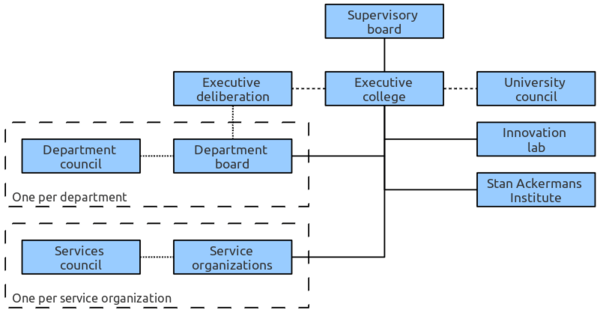
Executive college
The day-to-day running of the university is in the hands of the Executive College (Dutch: College van Bestuur). The College provides oversight for the departments, the service organizations and the Innovation Lab, plus the local activities of the Stan Ackermans Institute. The College consists of three people, plus a secretary:
- The chairman
- The chairman is the chairman of the college and the main face of the university to the outside world. Technically almost anybody can be chairman, as long as they have plenty of management experience. Over the last few years the post has been held by people from outside the university, chosen from industry top levels, in order to strengthen the ties between the university and industrial partners. The current chairman is ir. Jan Mengelers.
- The rector magnificus
- The rector magnificus is the one member of the College whose membership is mandated by law. The law allows the university to appoint a rector in any way, but the university statutes determine that the rector magnificus must be an active professor at the university (and must have been that before being appointed rector); in practice the rector is always a former department dean. The rector is the voice of the academic staff in the College and guards the academic interests of the university in the College. The current rector magnificus is Frank Baaijens.
- The third member
- The third member is a "tie-breaker" member of the College. The post is open to anybody (but generally not filled by an academic staff member). The current third member is Jo van Ham.
- The secretary
- The secretary is not a member of the College but a university functionary who does secretarial work for the College: he keeps the minutes and the records, plus takes care of the communication between the College and the university (posting announcements and so on). The College secretary is usually the secretary for the entire university. The current secretary is dr. M.M.N. (Nicole) Ummelen.
Oversight of the executive college
There are two bodies that provide oversight over the Executive College:
- The Oversight Board is an external board of five people appointed by the Minister of Education (one member is appointed at the suggestion of the University Council). The Board provides external oversight of the running of the university, including changing of the statutes, the budget and other management decisions.
- The University Council is a council of 18 people, half of whom are elected from the university staff (academic and otherwise) and half from the student body. The University Council is informed of the running of the university by the College at least twice a year and may advise the College as it sees fit. It guards against discrimination within the university. And the council must agree to changes in the management structure. The Council membership is open to all students and personnel, except those persons who are in the Oversight Board, the Executive College or who are the University Secretary.
Departments and service organizations
Most of the work at the university is done in the departments and the service organizations.
- The departments take care of most of the research and education at the university; each one is run by its professors, headed by the dean. The deans are all members of the executive deliberation meeting, which is a regular meeting of the deans and the rector.
- The service organizations provide services to the inhabitants of the university campus. Examples of these organizations include the housing organization, the ICT organization and the Communication Expertise Center (which does external communications, including to the press). Each service organization is headed by an organization head.
Both for the departments and the service organizations, the staff (and students) are involved with the running of the body. For that reason both types of bodies have advisory councils which have advisory and co-decision authorities.
TU/e Holding B.V.
Over the past two decades, the TU/e has increasingly developed commercial interests and off-campus ties. These include commercial agreements and contracts directly between the university and external companies, but also interests in spinoff companies. In order to manage these kinds of contractual obligations the university started the TU/e Holding B.V. in 1997. The Holding is a limited company, dedicated to the commercial exploitation of scientific knowledge.[16]
Education
Departments
The scientific departments (or faculties; Dutch: faculteiten) are the primary vehicles for teaching and research in the university. They employ the majority of the academic staff, are responsible for teaching and sponsor the research schools and institutions.
The vast majority of education is undergraduate education provided by the departments to students, who are adults with no other academic qualifications than a secondary education diploma. Some education is also provided to members of the postgraduate designer programs, but they are employed by the university and do not count as part of the student body.
Undergraduate education was given in four- or five-year programs until 2002, styled along the lines of the German system of education; graduates of these programs were granted an engineering title and allowed to prefix their name with the title ir. (an abbreviation of ingenieur; not to be confused with graduates of technical hogescholen, who were engineers abbreviated ing.). Starting in 2002, following the entry into force of the Bologna Accords, the university switched to the bachelor/master structure (students graduating in 2002 were given both an old-style engineering title and a new master's title). The undergraduate programs are now split into two programs each, a three-year bachelor program and a two-year master program. These programs are completely independent, in the sense that a bachelor can leave the university with his title and go to work, can enter a master's program at another university or continue on to the master's program of his department at the university. Of course bachelors from other universities can also enroll in the new master's programs.
The departments also offer Ph.D programs (Dutch: promotiefase) whereby a qualified master may earn a Ph.D. Unlike in anglo-saxon countries these are not educational programs, however; rather, a person working towards promotion is a research assistant, employed by the department, with teaching responsibilities in addition to his research work.
The TU/e has nine departments:
- Biomedical Engineering
- Built Environment
- Electrical Engineering
- Industrial Design
- Chemical Engineering and Chemistry
- Industrial Engineering & Innovation Sciences (formerly Technology Management)
- Applied Physics
- Mechanical Engineering
- Mathematics and Computer Science
Honors programs
The university offers two honors programs for "top students": students who have proven to have a knack for studying, have the capacity to handle a higher academic load and have an interest in more depth in their programs. There are two honors programs, both aimed at the bachelor students:[17]
- Honors Horizon
- The Honors Horizon program (started in September 2006) is aimed at bachelor students who are interested in introducing a multidisciplinary component into their program. Honors Horizon is intended to "expand students' horizon", by offering multidisciplinary honors classes, research activities and other activities that encourage academic well-roundedness. The Horizon project is an addition to the second and third years of the bachelor program.[18]
- Honors Star
- The Honors Star program (started in September 2010) is complementary to the Horizon program; where Horizon is multidisciplinary, Star is aimed at providing more depth within the program of the student's own department. Activities are still being fleshed out, but are expected to include more in-depth questions in exams and more practical projects. The Star program is an addition to the full duration of the bachelor program.[19]
Qualifying students can choose between the Honors programs, or follow both at the same time.
Shared minors
As of September 2010 the university offers bachelors in their third year a minor on sustainable energy. This minor will focus on providing students with skills needed to work in the sustainable energy industry, or to start their own company in this industry. For that reason the minor is driven entirely by problems supplied by industry and knowledge institutes, which minor students must solve in multidisciplinary teams. In addition, students must come up with an innovative plan and develop a start-up company.[20]
Postgraduate designer programs (PDEng)
The university started a number of postgraduate designer programs (PDEng) together with the other Dutch technological universities (TU Delft and University of Twente) in 1986. These programs are currently managed by the Stan Ackermans Institute on behalf of the 4TU Federation.[21] Each program is two years in length and graduates earn a Professional Doctorate in Engineering degree. There are a total of twenty programs active, of which thirteen are available at the TU/e:[22]
- TU/e PDEng programs:
- Automotive Systems Design
- Clinical Informatics
- Data Science
- Design and Technology of Instrumentation
- Design of Electrical Engineering Systems - Track Information and Communication Technology
- Design of Electrical Engineering Systems - Track Healthcare Systems Design
- Industrial Engineering
- Mechatronics System Design
- Process and Product Design
- Qualified Medical Engineer
- Smart Energy Buildings & Cities
- Software Technology
- User-System Interaction
The PDEng program nationally graduated its 3.500th PDEng.
Other educational programs
The university hosts a number of other educational programs that are in some way related to the main educational programs. These include the teacher's program and an MBA program.
- Eindhoven School of Education: Teacher's education for masters, to get their higher education teaching certificate. Also does research into educational sciences and innovation in education.
- TIAS School for Business and Society: A shared MBA program with the University of Tilburg, for university graduates.
- HBO minor program: Bachelor programs for students of HBO universities (four-year bachelor programs), to allow them access to university master programs.
Research
The TU/e participates in a large number of research institutes which balance in different ways between pure science and applied science research. Some of these institutes are bound strictly to the university, others combine research across different universities.
Top in research partnerships with industry
The TU/e is among the world’s ten best-performing research universities in terms of research cooperation with industry in 2011 (Number 1 in 2009). Ten to 20 percent of the scientific publications of these ten universities in the period 2006–2008 were the result of partnerships with researchers in industry. As well as TU/e and Delft University of Technology, the top 10 also includes two universities in Japan (Tokyo Institute of Technology and Keio University in Tokyo), two in Sweden (CTH Chalmers University of Technology and KTH Royal Institute of Technology in Stockholm), and one each in Denmark (DTU Technical University of Denmark in Lyngby), Finland (University of Helsinki), Norway (Norwegian University of Science and Technology in Trondheim) and the USA (Rensselaer Polytechnic Institute in Troy, New York).[23]
Off-campus activities
The TU/e plays a central role in the academic, economic and social life of Eindhoven and the surrounding region. In addition the university maintains relations with institutions far beyond that region as well and participates in national and international events (sometimes through the student body).
Economic and research motor
The TU/e is enormously important to the economy of the Eindhoven region, as well as the wider areas of BrabantStad and the Samenwerkingsverband Regio Eindhoven. It provides highly skilled labor for the local knowledge economy and is a knowledge and research partner for technology companies in the area.
The historic basis for the university's role as an economy and research motor was the interaction with Philips. The university was founded primarily to address the need of Philips for local personnel with academic levels of education in electronics, physics, chemistry and later computer science. Later that interest spread to DAF and Royal Dutch Shell (which became the primary employer for graduates of the chemistry department). There was also a synergy with these companies in that senior personnel were hired from them to form the academic staff of the university (which led to the Eindhoven joke that the university trains the engineers and Philips trains the professors).
Changing economic times and business strategies changed the relationship during the 1980s and 1990s. As Philips started moving away from the region, its importance to the region and the university decreased. A struggle for economic survival forced the university to seek closer ties with the city and region of Eindhoven in the 1989–1995 period, resulting in the creation of the Brainport initiative to draw high tech business and industry to the region. The university started expending more effort in knowledge valorisation, in incubating technology startups, in providing direct knowledge support for local technology companies. Also the academic interests of the research shifted with the times, with more effort going into energy efficiency research, green technologies, and other areas of interest driven by social relevance (the call for better technology in the medical field, for example, led to cooperation with the Catharina Hospital and the University of Maastricht medical department and finally the creation of the Biomedical Technology department).
The TU/e is host (and in some cases also commissioner) of a number of highly successful research schools, including the ESI and the DPI. These research institutes are a source of high-tech knowledge for high-tech companies in the area, such as ASML, NXP and FEI. The university also plays a large role as knowledge and personnel supplier to other companies in the High Tech Campus Eindhoven and helps incubate startups through the Eindhoven Twinning Center. It is also a knowledge supporter of the automotive industry in the Helmond region.
In the extended region, the TU/e is part of the backbone of the Eindhoven-Leuven-Aachen triangle.[24] This economic cooperation agreement between three cities in three countries has created one of the most innovative regions in the European Union (measured in terms of money invested in technology and knowledge economy); the agreement is based on the cooperative triangle that connects the three technical universities in those cities.
Eindhoven Energy Institute
As of the summer of 2010, the TU/e is host to the Eindhoven Energy Institute (EEI). The EEI is a virtual research institute (meaning that it doesn't have any actual offices or facilities), which manages and coordinates the activities of a large number of groups and subinstitutes in the general area of sustainable and alternative energy technologies.[25]
The scientific director of the institute is prof.dr.ir. David Smeulders. He is pro forma head of the research department, which is split into four key areas: Built Environment (energy usage and patterns in building, headed by prof.dr.ir. Jan Hensen from the Department of the Built Environment), Future Fuels (headed by prof.dr. Philip de Goey of Mechanical Engineering), Energy Conversion (headed by prof.dr.ir. René Janssen from Chemical Engineering) and Fusion and Plasma (headed by prof.dr. Niek Lopes Cardozo from Physics). The EEI also incorporates the Graduate School on Sustainable Energy, which the TU/e had already established together with the TU Munich and DTU Lyngby. Secretarial services will be provided by the Center Technology for Sustainable Development (TDO) which also already existed at the TU/e (since 1994).[26]
Energy research at the TU/e is among the best in academic Europe (a February 2010 study by Reed Elsevier puts it second only to Imperial College London).[27] This fact, as well as the unique attention to energy in the built-up environment, drew the attention of the European Institute of Innovation and Technology. The EEI is now a full co-location of EIT's KIC on Sustainable Energy (InnoEnergy).[25]
International cooperation and appeal
The TU/e sets a lot of store by international contacts and cooperation. The university maintains active, academic cooperation with sister institutions in several different countries, for example:[28][29]
- National University of Singapore, Singapore
- Zhejiang University, China
- Shanghai Jiao Tong University, China
- Fudan University, China
- Northeastern University (China), China
- International Institute of Information Technology, Bangalore, India
- International Institute of Information Technology, Hyderabad, India
- Manipal Academy of Higher Education, India
- Georgia Institute of Technology, US
- Northwestern University, US
- Carnegie Mellon University, US
- RMIT University, Australia
- Middle East Technical University, Turkey
- Katholieke Universiteit Leuven, Belgium
The TU/e also provides education to an increasing number of foreign students and graduates. According to the 2009 annual report[30] in the academic year 2008–2009 there were 490 exchange students, 103 foreign nationals registered in a bachelor program, 430 in a master program, 158 in a professional doctorate program (79% of the total). In 2009 the university employed 37 foreign professors (15.9% of the total) and 16 foreign associate professors (12.8%). Overall, 29.5% of the university staff was non-Dutch.
In 2011/2012, the TU/e has Erasmus bilateral agreements with many universities in 30 countries across Europe in a diverse range of subjects for student exchange.[31]
Technological sports
In addition to the "regular" types of sports practiced among the student body and by the staff, the TU/e collaborates with the student body in a number of "technology sporting efforts". These usually take the form of cross-department projects, which makes them multidisciplinary efforts. Some examples include:
- Robot football
- In 2010 TechUnited, the university's robot football team, won the European Championship,[32] came second for the third time in a row at the world championship in Singapore and finally won the world championship in 2012.[33][34] The team is part of the Mid-Size league of RoboCup.
- Auto racing
- The TU/e hosts and sponsors a student race team, University Racing Eindhoven (URE). This team competes annually in the Formula Student and other races with self-built racers. Starting in 2010 the team switched from a petrol engine to an electric car; this car came third at Silverstone, second at Hockenheim and won the Formula Student in its first year.[35]
- The university also hosts and sponsors a student race team, Solar Team Eindhoven (STE), that enters cars named Stella into the biannual World Solar Challenge since 2013, winning the Cruiser class competition both in 2013 and 2015.[36][37] Another student racing initiative is the Automotive Technology InMotion team, a collaboration between the TU/e and Fontys University of Applied Sciences. The team has the aim to compete in the 2020 24 Hours of Le Mans.
Service organizations
There university is more than just the departments, research bodies and the students. There are several ancillary activities necessary to the running of the university, activities that cross the boundaries and interests of the different departments. These activities are carried out by the universities' service organizations.
The university has the following service organizations:
| Organization | Full name | Purpose |
|---|---|---|
|
DAZ |
General Affairs Service (Dutch: Dienst Algemene Zaken) |
Organizational and secretarial functions for varied activities, the alumni organization and the Student Sport Center |
|
CEC |
Communications Expertise Center (Dutch: Communicatie Expertise Centrum) |
Responsible for all university communications and announcements, including interacting with the press and communications regarding external billing and payments. CEC also handles the printing and distribution of university brochures and guards the uniform application of the university's house style. |
|
DPO |
Human Resources Management (Dutch: Dienst Personeel en Organisatie) |
All HR-related activities, from vacancies and pension plans to regulations about health and workplace safety, to the bicycle plan (a tax break for personnel to buy a bicycle). |
|
DFEZ |
Financial and Economic Services (Dutch: Dienst Financiële en Economische Zaken) |
University finances. |
|
DH |
Housing service (Dutch: Dienst Huisvesting) |
Management of all real estate belonging university |
|
ICT |
ICT Service (Dutch: Dienst ICT) |
Management of university computers and student laptops, networks, network security, shared storage facilities, university Sharepoint sites, plus codes of conduct relating to those systems |
|
IEC |
Information Expertise Center (Dutch: Informatie Expertise Centrum) |
The university library (both physical and digital). |
|
DIZ |
Internal Affairs Service (Dutch: Dienst Interne Zaken) |
Internal services, such as the BedrijfsHulpVerlening (Emergency Assistance for catastrophes like fires, heart attacks and so on), Logistics, Purchasing and Contract Management. |
|
STU |
Student Service Center (Dutch: Onderwijs en Studenten Service Centrum) |
Student services (admission and registries, information for highschool students and other, future students, laptop service, et cetera). |
|
GTD |
Common Technical Service (Dutch: Gemeenschappelijke Technische Dienst) |
Provides technical services to departments (e.g. building of experiments, bespoke machinery, prototypes, specialized software). |
Distinguished alumni
- Wil van der Aalst, Dutch Computer scientist
- Jo Coenen, Dutch architect and former Chief Architect of the Netherlands
- Martijn van Dam, member of the House of Representatives (2006–10, 2010–12)
- Marijn Dekkers, Chairman of Unilever
- Jan Dietz, Dutch computer scientist
- Teun van Dijck, member of the House of Representatives (2006–10, 2010–12)
- Camiel Eurlings, Dutch Minister of Transport, Public Works and Water Management (2006–2010)
- Gerard Kleisterlee, Chairman of Vodafone and a former President and Chief Executive Officer of Royal Philips Electronics
- Arno Kuijlaars, mathematician, professor at the Katholieke Universiteit Leuven
- G.M. Nijssen, Dutch computer scientist
- Kees Schouhamer Immink, president Turing Machines Inc, digital pioneer, winner Emmy Award, recipient IEEE Medal of Honor
- Sjoerd Soeters, architect
- René van Zuuk, Dutch architect
Distinguished and otherwise notable faculty
- Nicolaas Govert de Bruijn, mathematician
- Henk Buck, professor of chemistry
- Jo Coenen, Dutch architect and former Chief Architect of the Netherlands
- Henk Dorgelo, physicist and first rector magnificus
- Edsger W. Dijkstra, mathematician and computer scientist
- Hugo Christiaan Hamaker, physicist
- Hubert-Jan Henket, architect
- Alexandre Horowitz, mechanical engineer; inventor of the Philishave
- Arie Andries Kruithof, physicist, discovered the Kruithofeffect and Kruithofcurve
- Piet Lemstra, inventor of the Dyneema fibre
- Jack van Lint, mathematician
- Harry Lintsen, historian in technology history, former chairman Foundation for the History of Technology
- Archer Martin, Fellow of the Royal Society, 1952 Nobel laureate in chemistry (professor TU/e 1964–1974)
- Bert Meijer, chemical engineer, pioneer in polymer research
- Sjoerd Romme, professor of Entrepreneurship & Innovation
- Johan Schot, historian, professor of technology history
- Piet Steenkamp, lawyer, co-founder of the CDA
- Martinus Tels, chemical engineer, rector magnificus, pioneer of waste management processes in the Netherlands
- Ton van Trier, rector magnificus, Minister of Education in the cabinet Van Agt-I
- Wietse Venema, programmer and physicist
Notable honors for research done at the university
- prof. dr. ir.René de Borst: Spinozapremie (1999)[38]
- prof. dr. Bert Meijer: KNCV Gold Medal (1993), Arthur K. Doolittle Award (1995), Spinozapremie (2001),[39] Wheland Medal 2010/2011[40]
- prof.dr.ir. René Janssen: KIvI/NIRIA Speurwerkprijs 2010, Spinozapremie (2015)[41]
- prof. dr.ir. Jaap Schouten: Simon Stevin Master 2006[42]
International acclaim
On the 2009 THE–QS World University Rankings (From 2010 two separate rankings will be produced by the Times Higher Education World University Rankings and the QS World University Rankings) list, the Eindhoven University of Technology was ranked inside the top 200 for the fifth consecutive year. An overview of the 2005–2018 rankings can be seen below. In 2010 the QS World University Rankings[43] ranked the university 126th in the world. On the Times Higher Education ranking of 2010[44] Eindhoven University of Technology is the highest ranked (#114) University of the Netherlands. They are followed by Leiden University (#124).
| Year | THE Ranking (Change) | QS Ranking (Change) |
|---|---|---|
| 2005 | 70 | – |
| 2006 | 67 ( | – |
| 2007 | 130 ( | – |
| 2008 | 128 ( | – |
| 2009 | 120 ( | – |
| 2010 | 114 ( | 126 |
| 2010-11 | 115 ( | 146 ( |
| 2012-13 | 114 ( | 158 ( |
| 2013-14 | 106 ( | 157 ( |
| 2014-15 | 144 ( | 147 ( |
| 2015-16 | 176 ( | 117 ( |
| 2016-17 | 177 ( | 121 ( |
| 2017-18 | 141 ( | 104 ( |
| 2018-19 | 99 ( |
| University rankings | |
|---|---|
| Global | |
| ARWU World[45] | 301-400 |
| Times World[46] | 141 |
| USNWR World[47] | 290 |
| QS World[48] | 104 |
In a 2003 European Commission report, TU/e was ranked as third among European research universities (after Cambridge and Oxford, at equality with TU Munich and thus making it the highest ranked Technical University in Europe), based on the impact of its scientific researches.[49] In 2011 Academic Ranking of World Universities (ARWU) rankings,[8] TU/e was placed at the 52-75 bucket internationally in Engineering/Technology and Computer Science ( ENG ) category and at 34th place internationally in the Computer Science subject field.
See also
- DevLab (research alliance)
- Technologist – magazine published by Eurotech Universities
Notes and references
- ↑ "Mens Agitat Molem". TU Eindhoven. Retrieved 2015-05-16.
- ↑ "TU Eindhoven Established". TU Eindhoven. Archived from the original on 11 September 2010. Retrieved 12 September 2010.
- ↑ "Facts and Figures 2009 report" (PDF). Eindhoven University of Technology.
- ↑ "Jaarverslag 2014" (PDF). Eindhoven University of Technology. Archived from the original (PDF) on 4 March 2016.
- ↑ "About the University". TU Eindhoven. Retrieved 2016-12-18.
- ↑ "TU Eindhoven Colors". TU Eindhoven. Archived from the original on 8 November 2010. Retrieved 12 September 2010.
- ↑ "Where to Study". Top Universities. Archived from the original on 28 September 2012. Retrieved 4 June 2013.
- 1 2 "Eindhoven University of Technology". Shanghairanking.com. Archived from the original on 16 May 2013. Retrieved 4 June 2013.
- ↑ TU/e: Facts and figures URL accessed on 3 July 2006
- ↑ European Commission ranking of the 22 European universities with the highest scientific publication impact, (see cordis.europa.eu for the full report)
- ↑ The world’s top 100 technology universities Archived 4 July 2006 at the Wayback Machine. URL accessed on 3 July 2006
- ↑ "Strategische alliantie TU/e met Universiteit Utrecht en UMC Utrecht" [Strategic Alliance TU/e with University of Utrecht and the UMC] (in Dutch). Eindhoven University of Technology. 3 January 2011. Archived from the original on 19 January 2011. Retrieved 17 January 2011.
- ↑ "Strategisch Plan 2020 vergt 700 miljoen euro" [Strategic Plan 2020 will take 700 million euro] (in Dutch). Eindhoven University of Technology. 3 January 2011. Archived from the original on 19 January 2011. Retrieved 17 January 2011.
- ↑ (in Dutch) "Strategisch Plan 2020" (PDF). Archived from the original (PDF) on 27 June 2011. Retrieved 17 January 2011. (3.0Mb)
- ↑ "Organogram". TU/e. Archived from the original on 31 August 2010. Retrieved 1 October 2010.
- ↑ "TU/e Holding B.V." (in Dutch). TU/e. Archived from the original on 14 August 2010. Retrieved 1 October 2010.
- ↑ "Honors program" (in Dutch). TU/e. Archived from the original on 20 January 2011. Retrieved 30 September 2010.
- ↑ "Honors Horizon program" (in Dutch). TU/e. Archived from the original on 17 July 2011. Retrieved 30 September 2010.
- ↑ "Honors Star program" (in Dutch). TU/e. Archived from the original on 17 July 2011. Retrieved 30 September 2010.
- ↑ "Nieuws:Onderwijs", Matrix, kwartaalblad van de Technische Universiteit Eindhoven, Eindhoven: Eindhoven University of Technology, 17 (Fall 2010), p. 15, 2010, ISSN 1380-247X
- ↑ "Stan Ackermans Institute". 3tu.nl. 7 December 2008. Archived from the original on 29 September 2010. Retrieved 4 June 2013.
- ↑ Post MSc designer programs Archived 18 September 2010 at the Wayback Machine. from the TU/e website
- ↑ "TU/e among world top in research partnerships with industry". Tue.nl. 2011-03-08. Retrieved 2013-06-04.
- ↑ ELAt.org The ELAt website
- 1 2 "This is EEI". TU/e. Archived from the original on 14 May 2010. Retrieved 21 September 2010.
- ↑ "Matrix, the TU/e quarterly publication, summer edition 2010" (PDF). Archived from the original (PDF) on 17 July 2011. Retrieved 21 September 2010. (2.3Mb; p.4-7)
- ↑ "Alternative Energy Leadership Study" (PDF). Archived from the original (PDF) on 17 July 2011. Retrieved 21 September 2010. (1.6Mb)
- ↑ "Samenwerking" (in Dutch). TU/e. Retrieved 18 September 2010.
- ↑ "(Inter-)national partnerships". Tue.nl. 2010-07-22. Retrieved 2013-06-04.
- ↑ (in Dutch) "Jaarverslag 2009" (PDF). (799.5kb)
- ↑ "Partner institutions". Tue.nl. 23 February 2011. Archived from the original on 24 May 2013. Retrieved 4 June 2013.
- ↑ Kraaijvanger, Tim (19 April 2010). "TU Eindhoven Europees kampioen robotvoetbal" (in Dutch). scientias.nl. Retrieved 16 September 2010.
- ↑ "Tech United tweede op WK robotvoetbal" (in Dutch). TU Eindhoven. 24 June 2010. Archived from the original on 17 July 2011. Retrieved 16 September 2010.
- ↑ "Nederland wereldkampioen robotvoetbal" (in Dutch). Nu.nl. 24 June 2012. Retrieved 14 July 2012.
- ↑ "University Racing Eindhoven rijdt naar eerste plek in Oostenrijk" (in Dutch). TU/e. 17 August 2010. Archived from the original on 17 July 2011. Retrieved 18 September 2010.
- ↑ "Stella". TU/e. Archived from the original on 3 June 2015. Retrieved 25 January 2015.
- ↑ WSC 2015 Cruiser class results
- ↑ (in Dutch) Spinozawinnaars 1995–2000 Archived 24 September 2010 at the Wayback Machine.
- ↑ (in Dutch) Spinozawinnaars vanaf 2001 Archived 24 September 2010 at the Wayback Machine.
- ↑ "Matrix, the TU/e quarterly publication, summer edition 2010" (PDF). Archived from the original (PDF) on 17 July 2011. Retrieved 21 September 2010. (2.3Mb; p.54)
- ↑ "NWO-Spinozapremies voor René Janssen, Birgit Meyer, Aad van der Vaart en Cisca Wijmenga" (in Dutch). Netherlands Organisation for Scientific Research. 12 June 2015. Retrieved 12 June 2015.
- ↑ "Uitreiking Simon Stevin Meesterschap 2006; Half miljoen voor slimme procestechnologie" (in Dutch). Technologiestichting STW. 12 October 2006. Retrieved 18 September 2010.
- ↑ "QS World University Rankings 2010 Results".
- ↑ "Times Higher Education Ranking 2010".
- ↑ Academic Ranking of World Universities 2018
- ↑ World University Rankings 2018
- ↑ U.S. News Education: Best Global Universities 2018
- ↑ QS World University Rankings 2018
- ↑ "ftp.cordis.europa.eu" (PDF). Archived from the original (PDF) on 2011-07-09. Retrieved 2013-06-04.
External links
| Wikimedia Commons has media related to Technische Universiteit Eindhoven. |
